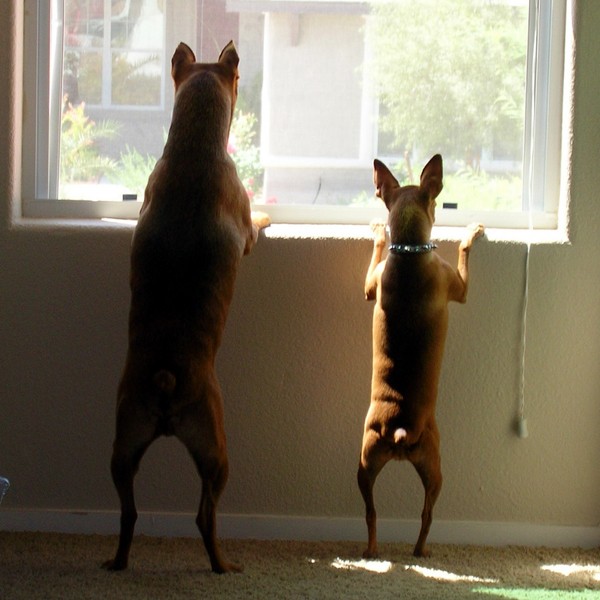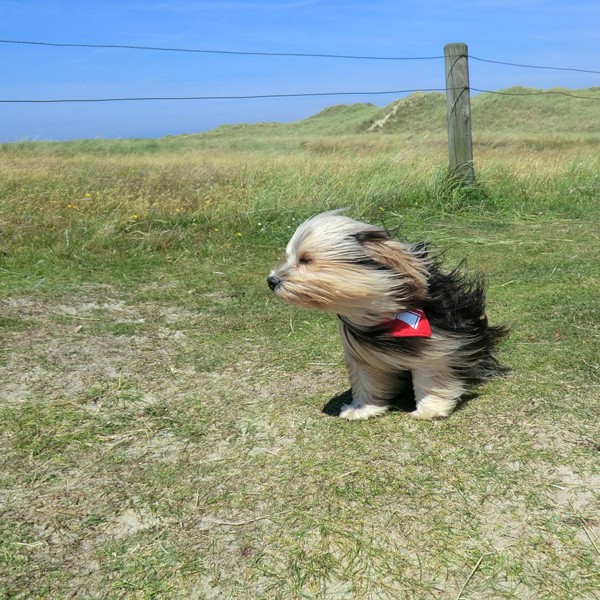Time matters to us. As a species, we were preoccupied with chronometry, or the study of time and its measurement, long before there were calendars or clocks to give structure to its passage. Some of the most significant beginnings — the first dog domestication, or the origin of organizing time itself — are lost to prehistory. Answers to these enduring questions will continue to elude us until the right archaeologist, digging in right place, discovers the right evidence.
For now, we must content ourselves with imprecise and ever-moving yardsticks. When were dogs first domesticated? The generally accepted hypothesis is that dogs began living with humans approximately 14,000 years ago. Based on evidence first published in 2015, researchers now believe that the bonds between dogs and humans may have been forged almost 33,000 years ago.
The start of measured time keeps changing as well. The oldest calendar we know of currently is only 10,000 years old. The world’s oldest known timepiece is only 3,300 years old. No matter when we started keeping time, we’ve lived with and loved dogs much, much longer by comparison. Dogs have certainly changed since they first associated with us. Have they picked up any of our obsession with time? Do dogs even have a concept of time?

They certainly know how to wait, but do dogs understand time as such? (Photo by Mike on Flickr)
A peep inside the dog brain
Before we can address how dogs think of time — if, indeed they think of it at all — we need to take a quick trip into the font of perception itself, the dog brain. Specifically, let’s look at the pineal gland, a tiny, seemingly insignificant bit of tissue, about 1 millimeter in length. Part of the endocrine system, which is responsible for the production, distribution, and regulation of hormones, the pineal gland is, in part, responsible for how both dogs and humans natively perceive time.
The pineal gland produces a hormone called melatonin, which influences a dog’s awareness of time, primarily governing daily, seasonal, and even sexual activity. In a day-to-day context, melatonin determines a dog’s circadian rhythms, colloquially known as the “body clock.” It influences how much sleep a dog gets and how long a dog is awake. If you know anything about dog sleep patterns, you know that the average baby puppy sleeps anywhere from 16 to 18 hours a day, and that an adult dog spends around 12 to 14 hours snoozing.
The production of melatonin is relative and responsive to how much light is available from Earth’s yellow sun. During autumn and winter, when there is less daylight, more melatonin is made and released. In the spring and summer, less is needed, so less is produced. For intact dogs, those who have not been spayed or neutered, the decrease in melatonin production during the spring and summer also happens to trigger estrous cycles. Our point here is that a dog’s time is largely governed without the aid or need of philosophical reflection.
Time, habit, and dog behavior
Of course, energy expenditure also makes a difference to a dog’s daily life. Whether a dog understands or thinks about being fed or taking a walk, if these operations are performed regularly, they become not only habitual, but anticipated. If you feed your dog every day at 7:30 a.m. and 5 p.m. for an extended period of time, they can begin to anticipate it. Dogs cannot read clocks or tell time, but, in association with their circadian rhythms, they may associate a certain amount of light coming through the window with a bowl of kibble.

Is this dog traveling through time or contemplating temporal mechanics? (Photo via Pixabay)
The same holds for exercise, if a dog owner is fastidious and regular about the practice. How many dogs start barking next to their leashes or by their bowls if their food or walk is later than usual? When a dog has a well-established routine, hunger or the need for exercise has nothing to do with the numbers on your coffee maker, nor the position of the hands on the grandfather clock in the hallway, and everything to do with what their bodies have become accustomed to through pattern and habit.
Across the board — whether it’s a brand of food, a favorite quilt, or a late-afternoon walk — dogs are literally creatures of habit. In some dogs, the absence of regular habits, executed at the same time every day, or random disruptions to those habits causes disruptive behaviors to manifest. It’s important to point out that dogs don’t exist in a vacuum. Hormones and habits play a role, but routines are also associatively linked with dog owners. It’s you who greets your dog in the morning or after work; you that walks and feeds your dog. A dog’s humans certainly play a part in how dogs perceive and understand time.
Do dogs have a sense of time?
How might the humans a dog interacts with most frequently affect their sense of time? The operative word here is “sense.” They certainly see faster than we do; for them, watching television is like looking at a particularly nonsensical flip-book. The most recent and exciting hypotheses about how dogs understand, perceive, or think about time revolve around their most powerful sense, to wit, their sense of smell. Work on this line of thought is, as yet, still in its infancy, but it’s entirely possible that dogs smell the passage of time.
On the face of it, the idea is bizarre and counterintuitive … to us. It’s anthropocentric to imagine that our way of thinking about anything is the “correct” or “proper” way. Smelling time sounds like synaesthesia; like the notion of hearing color, perhaps, or seeing sound. To the extent that dogs think or contemplate our activities, we’d probably have a rough go of it trying to explain why we take showers rather than lick ourselves thoroughly before leaving the house.

Is it possible that dogs sense time with their noses? (Photo via Shutterstock)
As for leaving the house, we know that separation anxiety in dogs is real and that destructive behaviors can follow as a consequence of leaving them alone, whether that’s for an extended period of time or leaving at all. Is it possible that our scent, whatever olfactory sensation our dogs associate with us, has a kind of half-life or rate of decay that informs their concept of time and its passage?
What use has a dog for time?
The poet William Blake loathed the very notion of regimented time, and his verses occasionally invoked the dog as a creature by whose treatment one could judge humans. The two strains of thought come together in his poem “Auguries of Innocence.” It seems to begin with a sense of temporal wonder from imagining what it would be like to “Hold Infinity in the palm of your hand / And eternity in an hour,” but the rest of the poem shows the harm that comes from neglecting the inherent freedom of the natural world. Shorter Blake: Make sure not to miss your dog’s customary feeding schedule.
Until such time as the rigorous work of science gathers substantially more evidence, our attempts to understand if dogs even have an active concept of time in the way that we do amount to little more than educated guesswork and speculative approximation. It is said that “every dog has its day,” but what is a “day” to a dog but a series of habitual events? Would we even want a dog to have to comprehend the amount of time we lose during our commute to work, much less the unending grind of the work week itself? What do you think?
The post Do Dogs Have a Sense of Time? appeared first on Dogster.
No comments:
Post a Comment